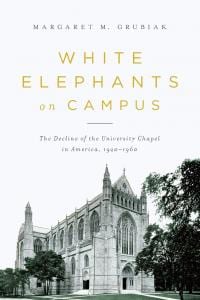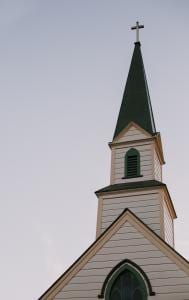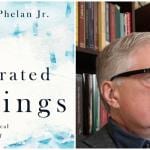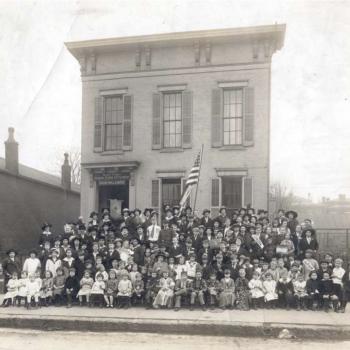Today’s guest post is by Benjamin Leavitt. Ben is a History PhD student at Baylor University and an advisee of Anxious Bench contributor Andrea Turpin. His Baylor MA thesis was on competing definitions of the Christian college in the early twentieth century United States, and his current research focuses broadly on the intersection of religion and institutional identity in American higher education.
The COVID-19 pandemic has had enormous effects on American higher education. Last week, Chris Gehrz (with contributions from the other Anxious Bench bloggers) provided reports on how college educators across the United States have been adjusting their classrooms to the new reality. Today’s post reflects on one unique area in which the pandemic has disrupted many distinctively Christian campuses: college chapel.
College chapel has a long history. On-campus devotional services were a ubiquitous part of American college life during the nineteenth century and persisted well into the twentieth, especially at church-related institutions. Here’s what chapel services looked like at Baylor University, a large Texas Baptist school, during the 1930s:
- Baylor brought a variety of outside speakers to campus, including the founders of an orphanage in China, the well-known fundamentalist theologian Harry Ironside, and a then-unknown National Youth Administration worker named Lyndon Johnson.
- When outside speakers weren’t present, local ones would often take the stage. Chapel attendees in the fall of 1936 saw the following: On September 18, a man “performed rope and lariat tricks of a difficult nature” to advertise the coming rodeo. On September 25, students were shown “[t]alking moving pictures” about automobile safety. On September 29, foreign students and non-Texans gave a pageant display, with the former “in native costume.” For the entirety of homecoming week, moreover, chapel was given over to class skits and to the practice of yells in preparation for the weekend football game.
- Pat Morris Neff, president of Baylor (1932-1947) and former governor of Texas (1921-1925), struggled continually with students who disrupted the decorum of those chapel services that he personally led. On one occasion, he spoke from the pulpit against such behaviors as “the manner of applause in chapel; conversation in chapel; reading in chapel; and walking on the grass.” Only the year before, chapel monitors reported that students had disturbed the so-called “president’s hour” by talking, climbing over seats, studying, spitting, or, most often of all, reading the student newspaper.
- President Neff also used chapel to inculcate and preserve gendered moral norms. He was especially concerned about the possibility of Baylor women smoking and spoke against the behavior in chapel on a regular basis. He also invited a male newspaper editor from Dallas to come and speak to Baylor’s women on “What Kind of Clothes a Woman Should Wear to a Picnic,” which Neff thought would be a suitable message for the campus to hear “before the picnic season of the coming spring is ushered into action.”
Some Baylor students of the 1930s may have wondered why they needed to remain seated and silent in the same chapel that, during other services and at other times, was appropriately filled with raucous yells. My own impression is that they were getting some serious mixed messaging.
 With the mid-century secularization of U.S. higher education, chapel services like these largely went by the wayside. One large survey of church-related colleges conducted in 1974 found that some 52% of the sample institutions had discontinued mandatory chapel since 1947, including 24% just during the years of 1967 to 1969. The turmoil of the 1960s plainly impacted religious institutions as well as secular ones. Thus, many college and university campuses around the nation today boast impressive yet underused (or repurposed) chapel buildings. (For more on these, I highly recommend Margaret Grubiak’s 2014 book, White Elephants on Campus.)
With the mid-century secularization of U.S. higher education, chapel services like these largely went by the wayside. One large survey of church-related colleges conducted in 1974 found that some 52% of the sample institutions had discontinued mandatory chapel since 1947, including 24% just during the years of 1967 to 1969. The turmoil of the 1960s plainly impacted religious institutions as well as secular ones. Thus, many college and university campuses around the nation today boast impressive yet underused (or repurposed) chapel buildings. (For more on these, I highly recommend Margaret Grubiak’s 2014 book, White Elephants on Campus.)
Yet, for many schools that maintain distinctive Christian identities, campus gatherings for chapel services are not a thing of the past—or, at least, they weren’t until the outbreak of COVID-19. Prior to 2020, some Christian colleges simply offered the services while others mandated them. Regardless, seeing as massive in-person gatherings are about the last thing advised by our public health officials, all of these institutions have had to respond creatively to the pandemic.
Here’s a small sample of examples connected to myself and the other Anxious Bench bloggers, all based on publicly available information. Some institutions—including my own alma mater, Grove City College (PA)—have continued holding compulsory chapel services but have taken health precautions such as limiting attendance requirements, spreading out participants, and eliminating congregational singing. Asbury University (KY), which also requires chapel attendance, has closed chapel to the public and staggered student attendance. Meanwhile, Valparaiso University (IN), which does not require chapel attendance but offers the services to interested students, is having participants pre-register for some chapel gatherings in order to keep attendance under 100. Calvin University (MI) has gone further by live-streaming its optional services and encouraging students to hum rather than sing unless they are watching chapel alone.
Finally, and returning to my earlier example, Baylor University has long had an undergraduate enrollment exceeding the capacity of its chapel spaces (of which there are now several). In the wake of World War II, a massive influx of students made all-campus gatherings unworkable (at least outside of sports arenas). The administration therefore limited the chapel requirement to freshmen and sophomores.
Today, Baylor undergraduates need only attend chapel for two semesters—and now (nearly) all of them are watching prerecorded services due to the pandemic. Yet, as the Baylor chapel staff noted at the beginning of this semester, the new digital format has also produced a different historic change: “For the first time in seventy-five years, Baylor chapel can open its doors yet again to the entire Baylor family.” In other words, you don’t need a building large enough to house 14,000-plus undergraduates when you have the Internet.

With all of this short-term change to college chapel comes the potential for long-term effects. On the one hand, this temporary break with communal tradition may cause some of the institutions that still require attendance to stop doing so. There was a reason why most American colleges abandoned compulsory chapel in the 1960s: long-term petitioning by students who objected to forced engagement with religion. At Coe College (IA), for instance, two-thirds of students were opposed to compulsory chapel as early as 1941, but the institution did not phase out the mandate until the mid-1960s, and even then only gradually. In that case, it took a student committee and numerous editorials in the student newspaper to finish the job. Just as some have theorized about long-term declines in church attendance, so might it be difficult to get college students back in chapel after COVID-19. They have tasted independence, and they may want more of it.
On the other hand, a Pew survey from July suggests that, if anything, church attendance may increase after the pandemic, especially among those who attended at least monthly before the outbreak. Perhaps the suggestion sounds incredible, but, after so many months socially distanced from their peers, students may well yearn for communal gatherings just as one Baylor student did during Pat Neff’s presidency. She wrote:
“If Chapel accomplished nothing more than the instilling and keeping alive of the Baylor Spirit, it would reach a goal not to be despised. If Baylor ever ceases to have chapel or grows to such an extent that there will have to be two periods, her spirit will be weakened. In the first case, it might die out, because it would not be passed on to the succeeding generation of students; in the latter, it would become a case of house divided against itself.”
Commentators are still uncertain about the long-term impact that COVID-19 will have on habits of public worship in the United States. I am equally uncertain about what recent events mean for the future of the college chapel. I tend to think, though, that tradition dies hard, especially when it involves sitting in a pew—or climbing over one.
*Many thanks to the archivists at one of Baylor University’s on-campus repositories, The Texas Collection, for preserving and making accessible the Baylor-related records cited in this post.*













